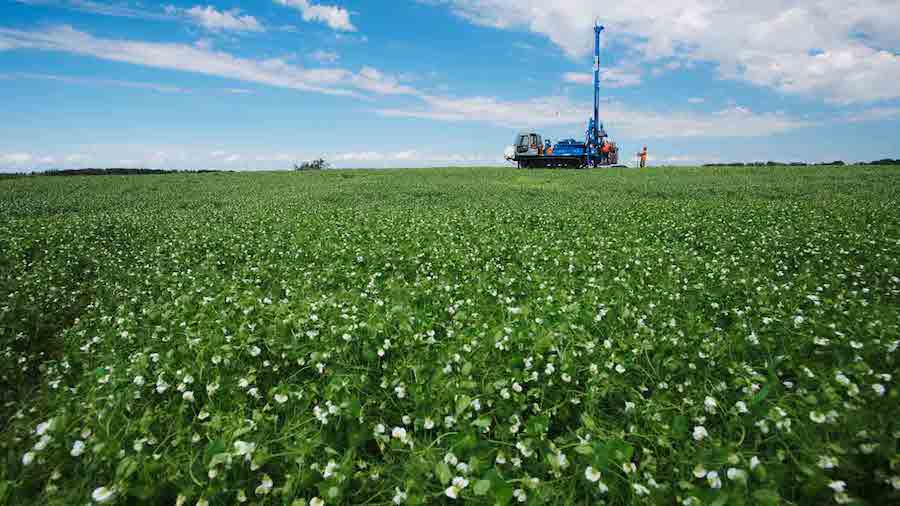Global S&T Development Trend Analysis Platform of Resources and Environment
| Canada potash project may cost BHP growth elsewhere, say investors | |
| admin | |
| 2021-05-17 | |
| 发布年 | 2021 |
| 语种 | 英语 |
| 国家 | 国际 |
| 领域 | 地球科学 |
| 正文(英文) |  BHP believes demand for potash could double by the late 2040s, by which point it could be a $50 billion market. (Image courtesy of BHP.)
BHP Group is under pressure from Canada to greenlight a giant potash project when it makes a final investment decision by mid-year but some investors said the world’s biggest miner may obtain better returns by ploughing the funds elsewhere. The fertiliser ingredient will be in oversupply over much of the next decade, crimping returns from the project, and BHP may be better off investing more in commodities like copper and nickel which are seeing booming demand from the adoption of electric vehicles and solar power, they said. The Anglo-Australian company would ease investor concerns if it firms up a plan to sell a stake in the project, one investor said. BHP has said a stake sale was an option. The Jansen project in Canada’s Saskatchewan province is estimated to cost up to $5.7 billion in the first phase, which is expected to take five years, and have an annual capacity to produce around 4.4 million tonnes of potash with an estimated mine life of 100 years. It will have capacity for an additional 12 million tonnes in stages thereafter.
BHP has already sunk $4.5 billion into the project, its first foray into potash, led by previous chief executive Andrew Mackenzie. The world’s biggest miner estimates demand for the ingredient could double by the late 2040s to become a $50 billion market. The project would be Saskatchewan’s largest investment ever, said the province’s Energy and Resources Minister Bronwyn Eyre. “We’re cautiously optimistic that this year will bring good news for the project. We hope it’s full steam ahead,” she said. BHP’s annual capital expenditure of as much as $1.1 billion for the project would be significant compared with the $6.3 billion it expects to spend this year, and some investors said the money could be put to better use. “I can understand the logic of developing it to diversify the earnings stream and create a long-return channel,” said Ben Cleary, portfolio manager at Tribeca Investment Partners in Singapore, which owns BHP shares. “But I would be surprised not to see the majority of capex spend on base metals, given how positive they are on the latter. Are they really going to put potash ahead of base metals?” Idled capacityMarket economics for potash currently are a challenge, say industry executives. BHP would compete with Nutrien Ltd, Mosaic Co and K+S AG, all of which operate mines in Saskatchewan. Nutrien has five million tonnes of idled potash capacity currently, Chief Executive Mayo Schmidt told Reuters earlier in May, though he expects rising demand to absorb that by 2030. “Both Nutrien and Mosaic have latent capacity that could come on, and it’s certainly going to come on at better economics than a greenfield would,” Mosaic Chief Executive Joc O’Rourke told Reuters in an interview this month. Some analysts, like Ben Isaacson of Scotiabank, though, are positive on Jansen. The first phase would not significantly disrupt the market and the steady growth in global potash demand means the extra output will be needed by 2030, he said. Scotiabank in April pegged the probability of BHP approving Jansen’s first phase at 90%. BHP chief executive Mike Henry has said he was not comfortable with the project’s spending but that a decision on its fate will be taken based on what it sees as the best use of shareholder capital. BHP declined to offer additional comment. The silver lining in all the spending that has “de-risked” the project is that it may be easier for BHP to sell a stake, said one institutional investor who owns BHP shares and declined to be named because it was against his firm’s policy. “They do need to start investing (more) in future facing commodities,” said the investor. “They have said they may look to sell down the project once they have de-risked it. That sort of option could still be on the table.” (By Clara Denina, Jeff Lewis, Rod Nickel and Melanie Burton; Editing by Muralikumar Anantharaman) |
| URL | 查看原文 |
| 来源平台 | Minging.com |
| 文献类型 | 新闻 |
| 条目标识符 | http://119.78.100.173/C666/handle/2XK7JSWQ/326021 |
| 专题 | 地球科学 |
| 推荐引用方式 GB/T 7714 | admin. Canada potash project may cost BHP growth elsewhere, say investors. 2021. |
| 条目包含的文件 | 条目无相关文件。 | |||||
| 个性服务 |
| 推荐该条目 |
| 保存到收藏夹 |
| 查看访问统计 |
| 导出为Endnote文件 |
| 谷歌学术 |
| 谷歌学术中相似的文章 |
| [admin]的文章 |
| 百度学术 |
| 百度学术中相似的文章 |
| [admin]的文章 |
| 必应学术 |
| 必应学术中相似的文章 |
| [admin]的文章 |
| 相关权益政策 |
| 暂无数据 |
| 收藏/分享 |
除非特别说明,本系统中所有内容都受版权保护,并保留所有权利。
修改评论